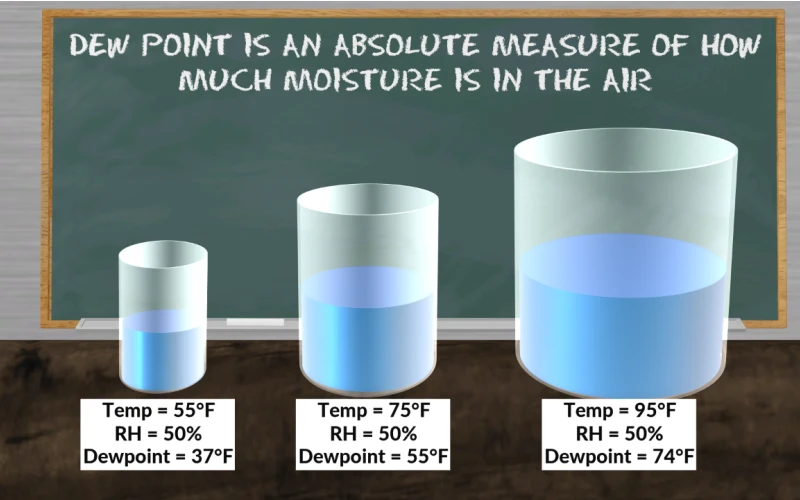
# High Dew Point Impact on Human Comfort and Health
## Understanding Dew Point and Its Significance
The dew point is the temperature at which air becomes saturated with water vapor, leading to condensation. When we talk about high dew points, we’re referring to conditions where the air holds a significant amount of moisture. Unlike relative humidity, which changes with temperature, the dew point provides a more consistent measure of atmospheric moisture.
## How High Dew Points Affect Human Comfort
When dew points rise above 65°F (18°C), most people begin to feel uncomfortable. This discomfort intensifies as the dew point increases:
– 65-70°F (18-21°C): Somewhat uncomfortable for most people
– 70-75°F (21-24°C): Quite uncomfortable, feeling muggy
– Above 75°F (24°C): Extremely oppressive and uncomfortable
The reason for this discomfort lies in our body’s cooling mechanism. In high dew point conditions, sweat evaporates more slowly from our skin, making it harder for our bodies to regulate temperature effectively.
## Health Implications of Prolonged High Dew Point Exposure
Extended periods of high dew points can lead to several health concerns:
### Heat-Related Illnesses
The combination of high temperature and high dew point creates dangerous conditions for heat stress:
– Heat exhaustion
– Heat stroke
– Dehydration
– Worsening of existing cardiovascular conditions
### Respiratory Issues
High moisture levels in the air can:
– Aggravate asthma symptoms
– Increase risk of respiratory infections
– Make breathing more difficult for those with COPD
### Sleep Disturbances
Elevated dew points at night can significantly impact sleep quality by:
– Making it harder to fall asleep
– Causing frequent awakenings
– Reducing deep sleep phases
## Vulnerable Populations
Certain groups are particularly susceptible to high dew point conditions:
– Elderly individuals
– Young children
– People with chronic illnesses
– Outdoor workers
– Athletes training in hot, humid conditions
## Mitigation Strategies
To cope with high dew point conditions:
– Stay hydrated with water and electrolyte-rich fluids
– Wear lightweight, breathable clothing
– Use air conditioning to lower indoor humidity
– Limit outdoor activities during peak heat and humidity
– Take cool showers to help regulate body temperature
## Climate Change and Rising Dew Points
As global temperatures increase, we’re observing higher dew points in many regions. This trend suggests that heat-related health issues may become more prevalent, emphasizing the need for better public health strategies and infrastructure to deal with increasingly humid conditions.
Understanding and preparing for high dew point conditions can significantly improve comfort and reduce health risks during humid weather periods. By recognizing the signs of heat stress and taking appropriate precautions, individuals can better protect themselves and their families from the adverse effects of high atmospheric moisture levels.
Keyword: high dew point